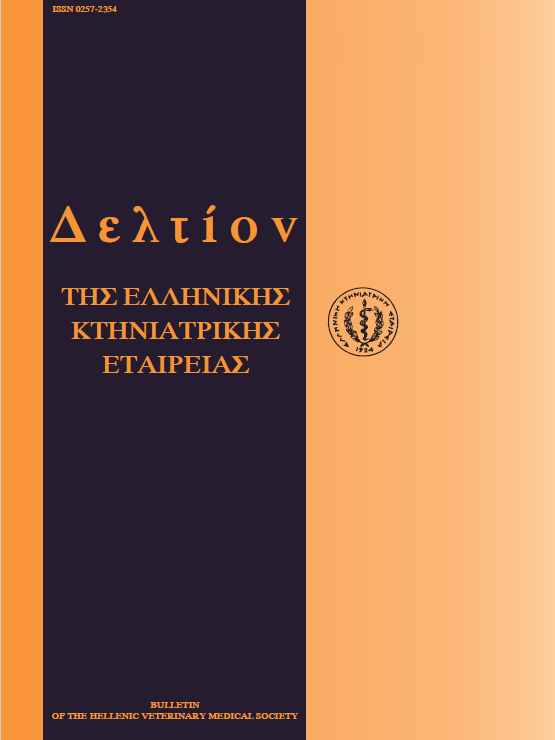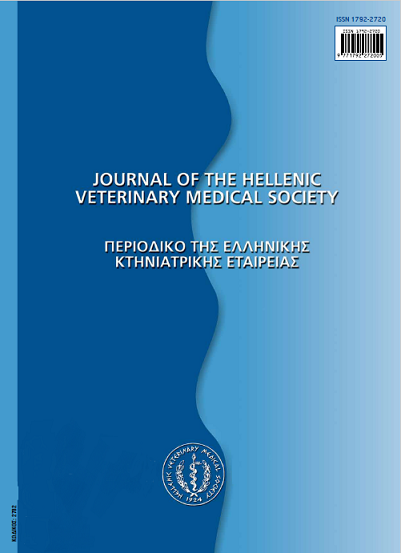Σύγχρονες απόψεις πάνω στην ανοσοπαθογένεια των δερματικών αλλοιώσεων στη λεϊσμανίωση του σκύλου

Περίληψη
Η ανοσολογική αντίδραση του σκύλου στη Leishmania infantum καθορίζει όχι μόνο την ποικιλομορφία των δερματικών αλλοιώσεων αλλά και την ευαισθησία ή την ανθεκτικότητα του σκύλου στην προκαλούμενη νόσο. Η διήθηση του χορίου από ενεργοποιημένα Thl CD4+ λεμφοκύτταρα,που προϋποθέτει την έκφραση των συνδιεγερτικών μορίων Β7 από τα μολυσμένα μακροφάγα (IL-12 καιIFN-γ), καταλήγει στην ενεργοποίηση των μακροφάγων και την εξόντωση του παρασίτου. Το αντίθετο συμβαίνει όταν αυτό διηθείται από Th2 CD4+ λεμφοκύτταρα. Η έκφραση του παράγοντα FasL από τα Thl CD4+ κύτταρα φαίνεται ότι παίζει σημαντικό ρόλο στην αποτελεσματική λειτουργία των τελευταίων.Στην αποφολιδωτική δερματίτιδα της λεϊσμανίωσης του σκύλου, η ανοσολογική απάντηση είναι αποτελεσματική, στα δερματικά οζίδια ανεπαρκής, ενώ στην ελκώδη δερματίτιδα έχει μικτό χαρακτήρα. Στην πρώτη κυριαρχούν τα Τ λεμφοκύτταρα, ενώ συχνό εύρημα αποτελεί η κοκκιωματώδης σμηγματαδενίτιδα. Η αναλογία μεταξύ των CD4+ και των CD8+ κυττάρων είναι περίπου η ίδια,ενώ τα μισά περίπου είναι κύτταρα μνήμης. Στη λεϊσμανίωση του σκύλου, η χρήση του μορίου avn-CD28 και/ήτων κυτταροκινών IL-12 και IFN-γ, φαίνεται στο μέλλον ότι θα βοηθήσουν τόσο στην παρασιτολογική ίαση, όσο και στον αποτελεσματικό εμβολιασμό στη λεϊσμανίωση του σκύλου.
Λεπτομέρειες άρθρου
- Πώς να δημιουργήσετε Αναφορές
-
PAPADOGIANNAKIS (E. Ι. ΠΑΠΑΔΟΓΙΑΝΝΑΚΗΣ) E. I., KOUTINAS (Α.Φ. ΚΟΥΤΙΝΑΣ) A. F., & KOUTINAS (X.Κ. ΚΟΥΤΙΝΑΣ) C. (2018). Σύγχρονες απόψεις πάνω στην ανοσοπαθογένεια των δερματικών αλλοιώσεων στη λεϊσμανίωση του σκύλου. Περιοδικό της Ελληνικής Κτηνιατρικής Εταιρείας, 52(4), 249–256. https://doi.org/10.12681/jhvms.15453
- Τεύχος
- Τόμ. 52 Αρ. 4 (2001)
- Ενότητα
- Review Articles

Αυτή η εργασία είναι αδειοδοτημένη υπό το CC Αναφορά Δημιουργού – Μη Εμπορική Χρήση 4.0.
Οι συγγραφείς των άρθρων που δημοσιεύονται στο περιοδικό διατηρούν τα δικαιώματα πνευματικής ιδιοκτησίας επί των άρθρων τους, δίνοντας στο περιοδικό το δικαίωμα της πρώτης δημοσίευσης.
Άρθρα που δημοσιεύονται στο περιοδικό διατίθενται με άδεια Creative Commons 4.0 Non Commercial και σύμφωνα με την άδεια μπορούν να χρησιμοποιούνται ελεύθερα, με αναφορά στο/στη συγγραφέα και στην πρώτη δημοσίευση για μη κερδοσκοπικούς σκοπούς.
Οι συγγραφείς μπορούν να καταθέσουν το άρθρο σε ιδρυματικό ή άλλο αποθετήριο ή/και να το δημοσιεύσουν σε άλλη έκδοση, με υποχρεωτική την αναφορά πρώτης δημοσίευσης στο J Hellenic Vet Med Soc
Οι συγγραφείς ενθαρρύνονται να καταθέσουν σε αποθετήριο ή να δημοσιεύσουν την εργασία τους στο διαδίκτυο πριν ή κατά τη διαδικασία υποβολής και αξιολόγησής της.










